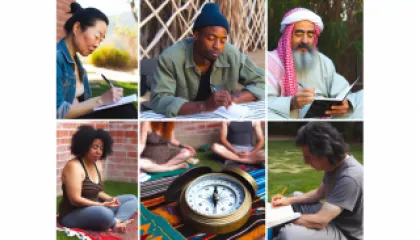Top 10 Strategies to Discover Your Life Purpose
1 year ago
Finding Life Purpose
Discovering your life purpose can be a transformative journey that leads to greater fulfillment and joy. It can help individuals understand their passions, strengths, and values, and align their lives accordingly. Whether you're feeling a bit lost or simply want to reassess your current path, these top 10 strategies can guide you.
Mastering the Art of Overcoming Resistance: A Comprehensive Guide
1 year ago
Understanding Resistance
Resistance is a common obstacle that everyone encounters at some point in their journey towards achieving goals. Whether it's resistance to change, resistance to new ideas, or resistance to taking action - understanding and overcoming this force is crucial for personal and professional development. This comprehensive guide will delve into the concept of resistance, exploring its roots, its impacts, and effective strategies for mastering its art.
5 Steps to Begin Mindfulness Meditation for Beginners
1 year ago
Mindfulness Meditation
Have you ever found yourself overwhelmed by your thoughts, feeling like your mind is running a marathon at full speed without the option to slow down? If so, mindfulness meditation might be exactly what you need. It's a simple and effective practice that helps you live in the present moment, reduce stress, improve your mental clarity, and enhance your overall quality of life. In this guide, we will walk you through 5 steps to begin mindfulness meditation, especially designed for beginners.



